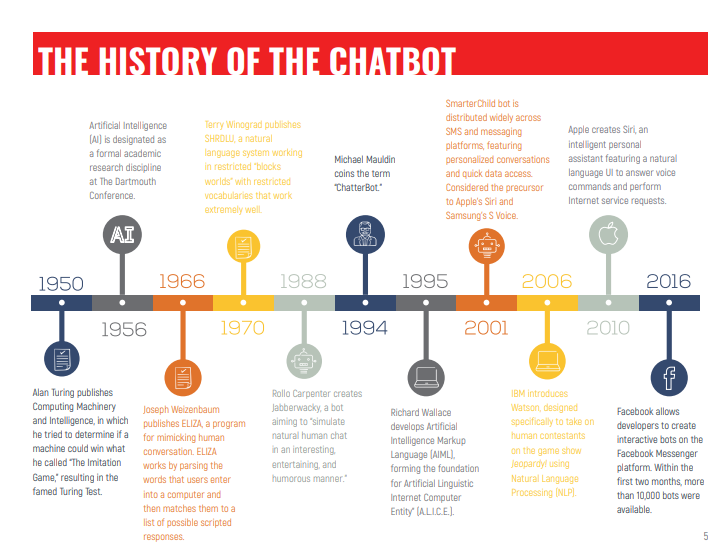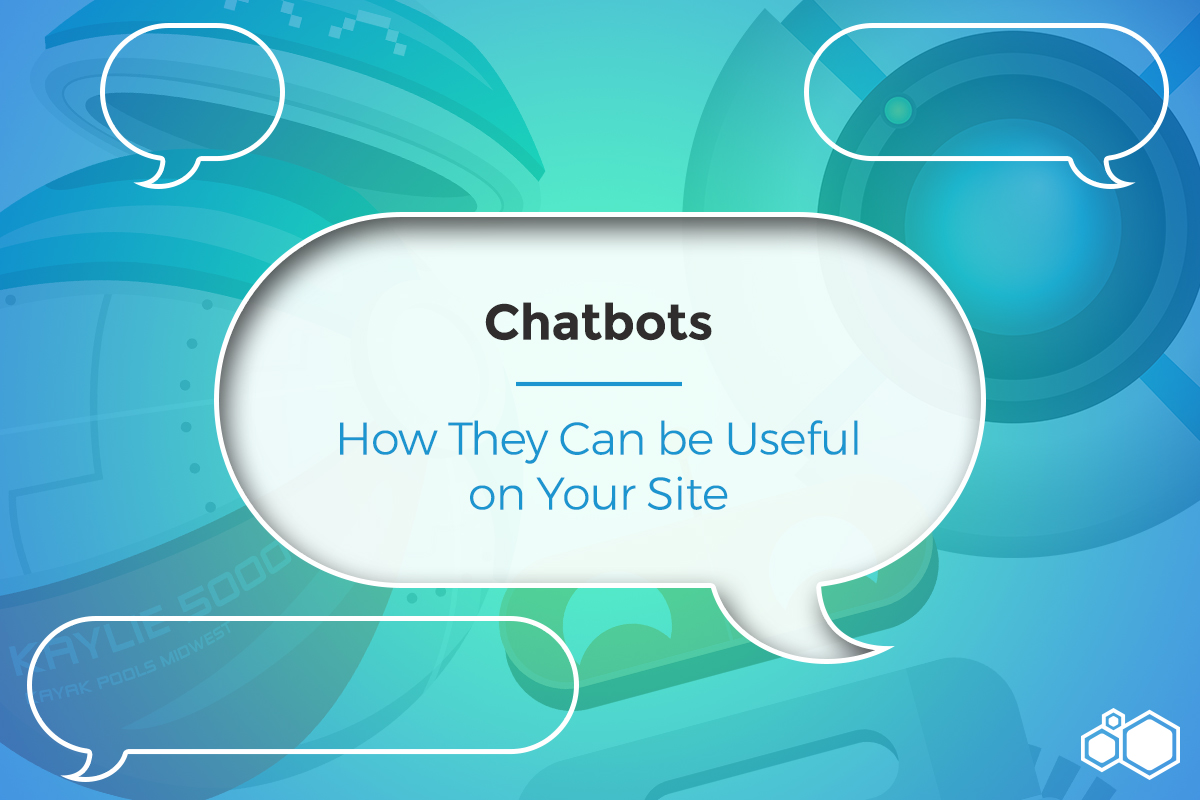“Imagine how you would be if you were not connected.” -Created by InspiroBot
Chatbots, they’re everywhere. Sometimes you don’t even realize you’re talking to one. Still, they have their issues, we can defeat them quite easily still by asking out-of-left-field questions or repeating ourselves like a fool. But, that’s not to say they haven’t improved. In fact, they’ve evolved so significantly in the past year thanks to artificial intelligence (AI) and the natural language programs that power them that sometimes they feel human – queue the AI takeover. Though we’re not on that level yet – thank you baby Jesus – chatbots are becoming an ever-present force among business and marketing which is further accelerating their development.
By 2020, more than 85 percent of customer interactions will be handled by a machine or effective virtual assistant and will be the top way for businesses to differentiate themselves.
Business Today
Today’s business environment is completely different than it was a decade ago. Customers are savvier. There’s a wealth of data out there that they can and do tap into right at their fingertips. They prefer social media and mobile platforms to do the heavy lifting for their communication and demand immediate, intuitive experiences without any hassle.
Because of this generation’s savviness, businesses across all industries are being challenged to provide personalized, responsive experiences across multiple channels. It’s no longer viable to have just a call center or a newsletter blast once a week. Consumers need information now and demand it. Otherwise, you’re just dust in the wind (did someone say Kansas?).
More than 85 percent of consumers have used an online-based channel, whether it be text, live chat, email, you get the gist. On top of that, around 60 percent of consumers change their contact channel based on what they’re doing and where they are, requiring businesses to be even more flexible. Staffing live agents to meet this flexibility is one, ultra-expensive, and two, is damn near unattainable. Even the largest organizations would struggle to staff thousands of people 24/7 to answer and provide personalized feedback to consumers.

Chatbot Support
This is where chatbots step in. Though they will never fully replace humans – or at least in the foreseeable future – but built right with a robust knowledge base, natural language processing capabilities to understand complete sentences and slang, and real-time analytics, they can offload a chunk of the redundant, time-consuming tasks that live teams face on the day-to-day.
Chatbots are limited only by the imagination of the creator. Two of the main functions that chatbots are used for today is to help with searching and transaction execution.
At the search level, chatbots use semantic search technologies to help customers locate the information they are looking for quickly. They can locate the information the consumer is looking for by having the consumer type in or say what they’re looking for and it can then direct them to the necessary location.
The second level that chatbots are consistently used for is a self-service landscape. They go beyond the simple execution of semantic search and go forth with simple transactions like resetting passwords, requesting time off, booking flights, ordering pizza, all without needing the guiding hand of a human.
Enterprising Chatbots
Entertainment – Ticketmaster’s has a chat widget that delivers 24/7 online support for customers to simplify and accelerate online purchasing. With prompting messages like “What’s happening tonight?” and following with message-style text, the bot will show you every event Ticketmaster is serving up in an area. It covers 83 countries, so it’s got just about every corner covered.
Retail – H&M created a Kik chatbot that offers online shoppers personalized style tips and clothing combinations. It also doubles as a transactional bot, so customers can use it to complete and buyout the outfits they put together in tandem with the bot.
Hospitality – Dutch airway KLM built a chatbot with Facebook’s Messenger to send passengers messages about booking confirmations, flight delays, reminders for boarding times, as well as actual boarding passes. Using this is a simple way to keep passengers informed and allows the gate agent to focus on getting new passengers taken care of and lining the boarding order.
Finance – Bitcoin marketplace Xapo has a chatbot that educates consumers about Bitcoin, answers questions that a customer would typically have about their account, purchases that were made, or how to initiate and execute trades.
Consumer Banking – Kasisto’s MyKai chatbot uses apps like Messenger and Slack to provide bank information to customers and provides them with a simple way to manage their money. Basic transactions can be made and transfers as well.
Food Service – Taco Bell created a chatbot – aptly named Tacobot – that allows customers to see the entire Taco Bell menu, create orders, and offer customizations to those orders.
Get a Chatbot for Your Company
Above are just some examples of how chatbots are being implemented in certain segments of a business. Now, you could copy their ideas but that would just put you a step behind already. Being at the forefront of business and gaining new consumers while retaining the old is about being innovative. So, to build your own chatbot there are some things that need to be considered. And these are hefty things too. And they need to be. You don’t want some worthless chatbot that doesn’t serve a purpose because that’ll just turn off customers.
What do you need to consider?
- Research your subject. AI might seem like the silver bullet for all your customer care concerns – and it can be – but it takes hella time and resources to optimize. Familiarize yourself with NLP and discover what your bot can do.
- Create a list of potential vendors who have similar experiences and can deliver what you need.
- Try before you buy. Schedule a live demo and have us walk you through customer development and watch in real-time how this technology is being deployed.
- Probe with a bunch of questions. There’s no such thing as a dumb question. The only way you become a dumbass is by not asking the question. JUST ASK. Each chatbot is unique to the business it serves and therefore needs all the input to make sure it’s up to the task.
- Plan out its future. Don’t just create your bot for today. Make it a staple of your business so that way it can be a valuable service and a natural part of your company.
Overview of Chatbot Essentials
Now that you have your bot thought out, let’s take a recap of the essentials and considerations you should take. First, you need to leverage a platform that uses AI and NLP so your chatbot understands your customers and doesn’t look like a fool. Second, if you’re going to build it from scratch, we got you. Third, enable entity detection to locate, identify, categorize, and analyze key-words and phrases used in conversation. Fourth, prepare your bot to handle transactions. Whether it’s password resets, reservations, or orders. Fifth, connect that bot to your ecosystem. This includes CRM, ERP, CMS, and whatever critical application you got. Sixth, review and adjust.
Does it sound like you could use a chatbot for your business? Hit us up. We’ll plan, build, and adjust a bot to fill your every need.




